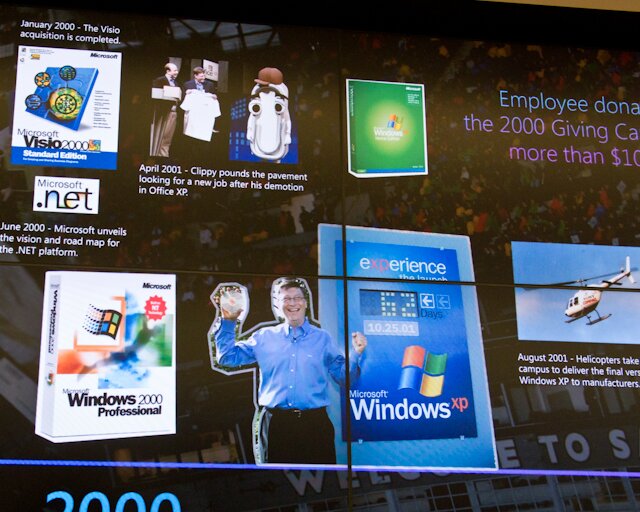The first week of its life, after the grand opening celebration, the Microsoft Store at University Village has about a dozen shoppers a little after one o’ clock on a Monday. There’s plenty of room to navigate among the tables that recall, sharply, the layout of the Apple Store across the parking lot. It’s the look of a tag-along kid brother.
Geekwire says this store is number 12, with “up to 75” more stores planned for the next two to three years. They quote Kevin Turner, Microsoft’s COO, saying the retail push is “helping us transition from thinking about our customers to thinking like our customers.”
So what can you get at a Microsoft Store? You can buy the latest edition of Windows or Office, an Xbox 360, a variety of games, and Microsoft keyboards and mice. You can choose from a selection of phones (HTC, Dell, Samsung) that run Windows Phone 7, and an assortment of laptops also running Windows 7.
You can also play Kinect in the window.
The “me too” impulse behind the Microsoft Store’s design obscures the differences in retail strategy. When you walk into an Apple Store, you’re shopping for–outside of some accessories–an Apple product.
Outside of the Xbox, when Microsoft makes a big sale on hardware (a laptop or phone), it’s making a sale for another company, of which it derives some small portion of OEM revenue. Do people shop for Windows 7 phones, rather than the models of phones they can use with their carrier?
Rents at the University Village are not inexpensive, as the recent contretemps over the Barnes & Noble bookstore lease indicates. Microsoft can afford not to worry about the time to break-even, but why not just call it the Xbox store? (I’m reasonably sure we’ll never see people camping out–unironically–for the new release of a Microsoft keyboard, or even Office.)
The net result is that the street runs both ways: After visiting a Microsoft Store, customers learn something about Microsoft thinks. The words “hodge-podge,” “potpourri,” and “amalgamation” spring to mind. That’s not necessarily terrible, but when the décor invites comparison to Apple, and Apple’s focus, it casts into relief the ways in which Microsoft isn’t like Apple at all.






